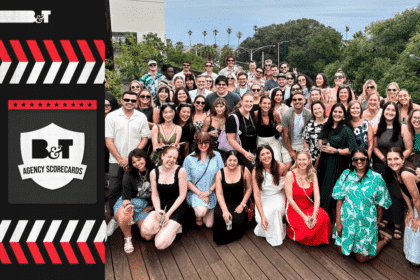The viewing experience has fundamentally changed. Once as simple as turning on the TV, the modern viewer now might be streaming, live Tweeting, shopping and online dating all at once.
Audiences routinely switch, skip and multitask between content and screens, creating what can only be described as a world of distraction.
So how can advertisers stand out and grab a customer’s attention?
This is the question Rachel Corbett looks to answer in the latest episode of Rethink, a podcast by Think with Google.
To explore this topic, she chats with Unilever brand manager Kate Westgate, who led Lynx’s ‘Find Your Magic’ campaign for Lynx Australia.
By building out the storyline of a young Kiwi boy trying to build up the confidence to talk to his crush, the ad had viewers hooked.
The 1:50 long video managed to achieve an average view duration of 1:30 on YouTube alone – amounting to over 4 million minutes of viewing.
It also led to Lynx Australia surpassing Lynx Africa as the number one body spray for the brand for the first time in 15 years.
Lynx focused on what Gen Z is looking for in content and found that they are generally more accepting of difference, Westgate said.
By focusing on what the customer wants, the campaign was able to maximise effectiveness through attention.
“When you’re creating a new innovation or an ad, you need the consumer to be at the heart of everything you do, you need to speak to them in their language and find where they’re consuming media,” she said.
“You really need to be obsessed about your consumer.”
Video length, does it matter?
Corbett also speaks with Emotive head of distribution and analysis Jamie Crick, who led the creative for the Lynx campaign.
While the Lynx campaign hovered on the longer side at 1:50, Crick said that grabbing the consumer’s attention right away should still be a priority for advertisers.
“You do have to grab attention in the first few seconds,” Crick said.
“And I think also establish narrative tension because that signals to the audience that something expected might be coming and then also construct the video so that you’re giving the audience emotional peaks throughout the video rather than just building it to a crescendo at the end.”
According to Google’s director of consumer and market insights team for APAC Stuart Pike, recent research from Kantar and EyeSquare shows that context is also an important factor in getting the audience’s attention.
He points to the morning (pre-COVID) commute to work as a perfect example.
“We’ve actually found that there are some really interesting environments that seem to be conducive to greater attention,” Pike said.
“This is not necessarily a knock on that living room environment, but there are distractions there… there are these almost out of home pockets of activity.
“A perfect example would be sitting on the train heading into work pre coronavirus and we’re all commuting to work.
“You found a seat on the train; you can sit down and just immerse yourself.”
Alongside context, there is also evidence to show consumer choice is a powerful tool for advertisers.
Pike points to a recent study out of the U.K., which found 71 per cent of videos that were actively selected had one investment signal, compared to 33 per cent of passively consumed videos.
“We’ve seen lots of evidence that [consumer choice] is very powerful,” he said.
“The hypothesis basically is that if we choose to view something rather than having it forced upon us, we pay a lot more attention to it.”
What to do when all the attention is on you?
While most advertisers are always fighting for customer’s attention, there are rare occasions where everyone’s attention is inadvertently put on them.
One brand that found itself in this position was Dettol, which became the hottest item on supermarket shelves earlier this year at the beginning of the COVID-19 outbreak.
In the midst of the chaos – and with some of its products running out – Dettol launched the ‘Protecting Tomorrow’ campaign, something which RB Health Marketing Director Henry Turgoose said was about inspiring people and making them feel empowered.
The campaign also highlighted the importance of advertisers maintaining a presence, even in the toughest of times.
“There was a huge demand for Dettol products and frankly that left retailer’s shelves empty, which meant that from a media perspective we went really quiet,” said Turgoose.
“What was really critical for us as a brand was that we picked up that voice again and we had a voice and we had a presence during this time of real need.”
At 60 seconds, the campaign is also on the slightly longer side.
Turgoose said this was a result of the high emotions at the time meaning “we knew… that we could grab attention and we could hold attention and we could really, really reinforce the trust”.
With this longer format agreed upon, placing the video on YouTube was the obvious answer.
“Once we locked on an idea of where we wanted to go with the creative, YouTube immediately became very much a chosen platform for us. The ability to target and the ability to have clear metrics… was a natural choice for us.”
You can listen to the latest episode of Rethink, by Think with Google on Google podcasts, on Google Podcasts, Apple Podcasts, Spotify, Stitcher, Podcast Addict or TuneIn.
This podcast was brought to you by Think with Google. Created by The Hallway & Eardrum- in partnership with Google.








